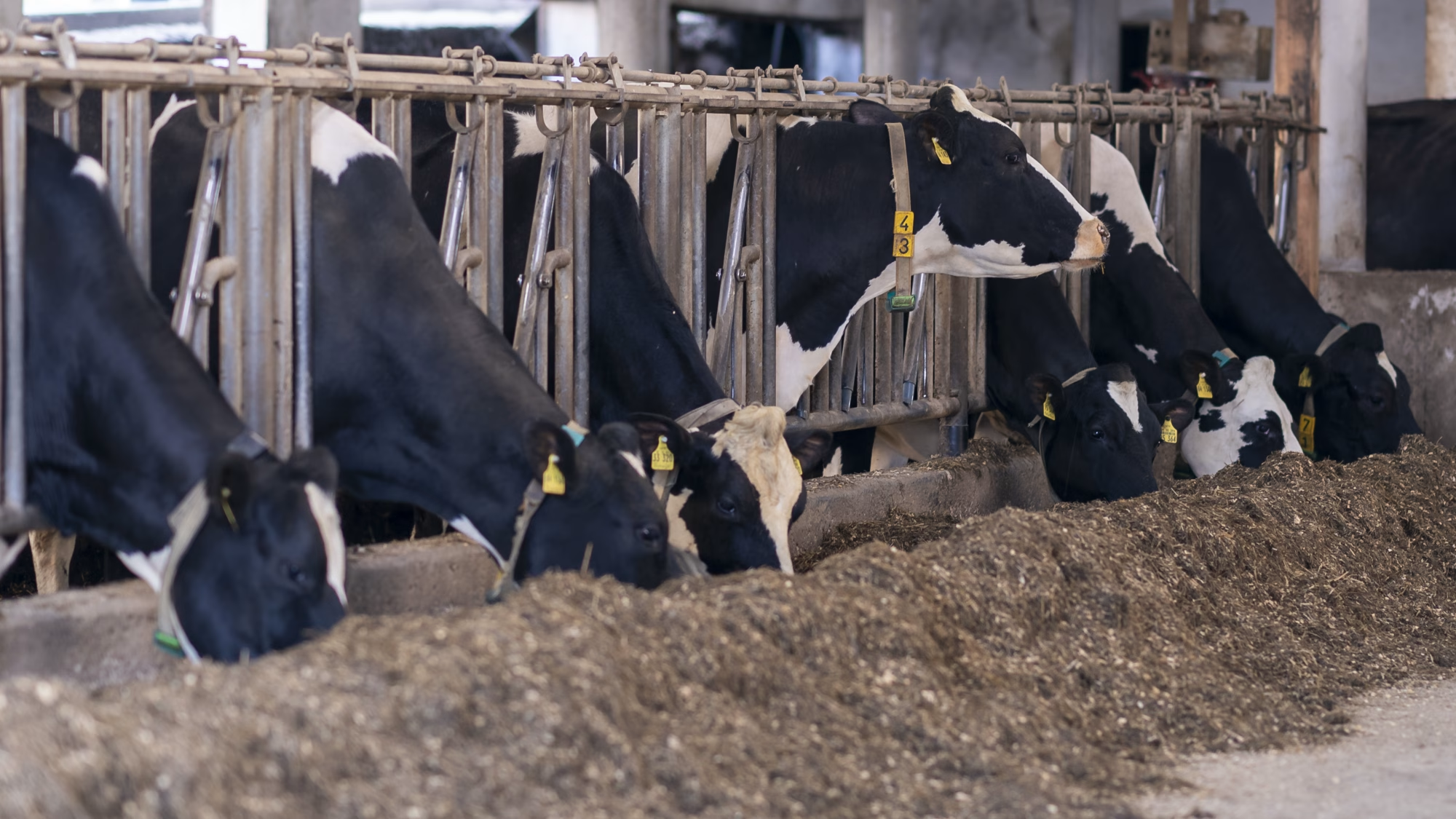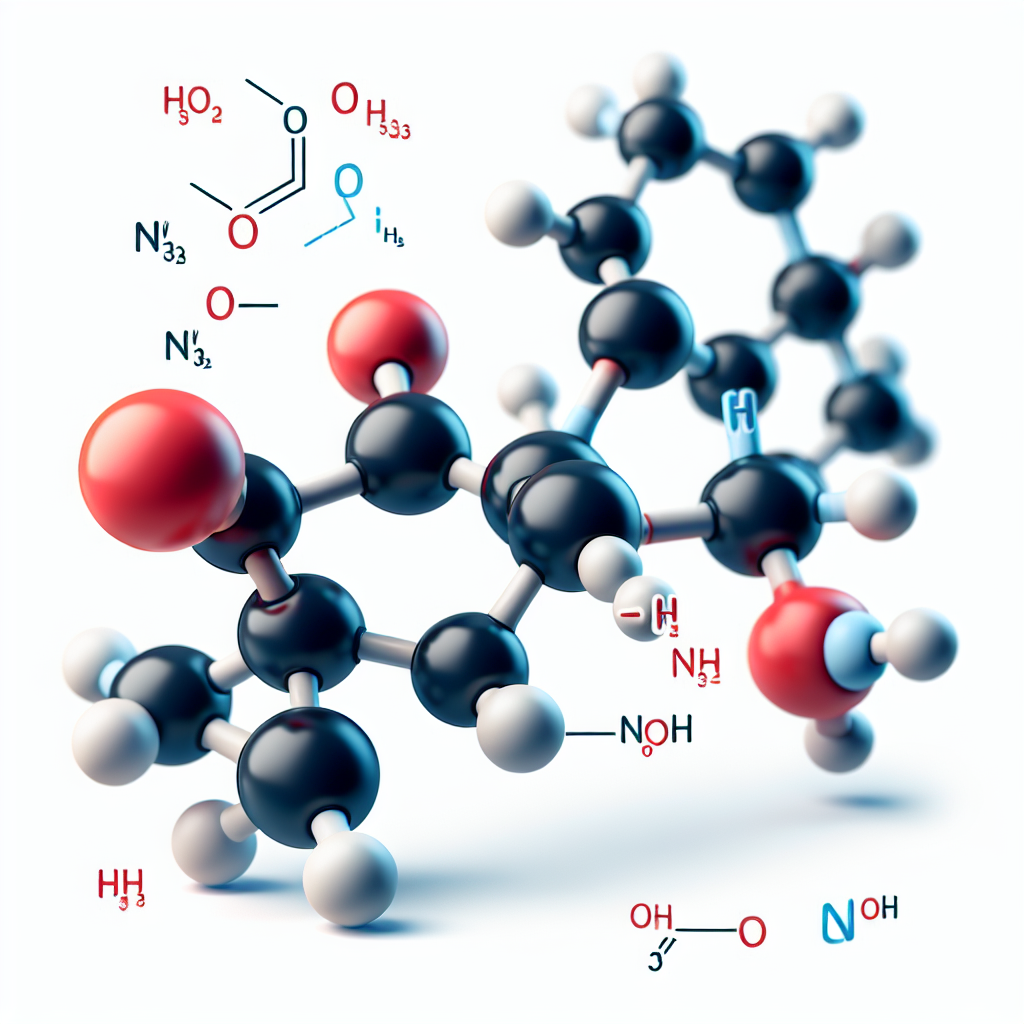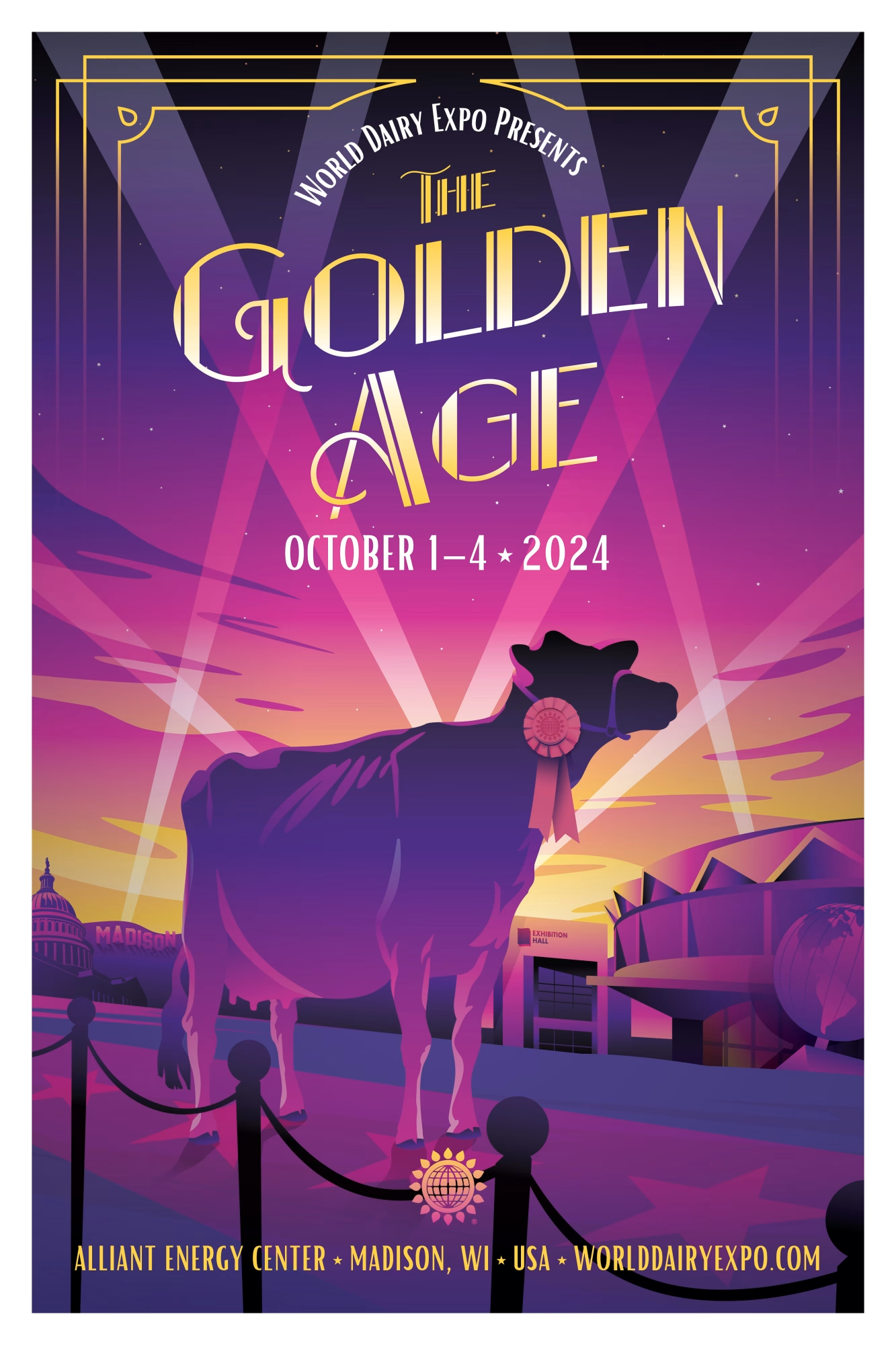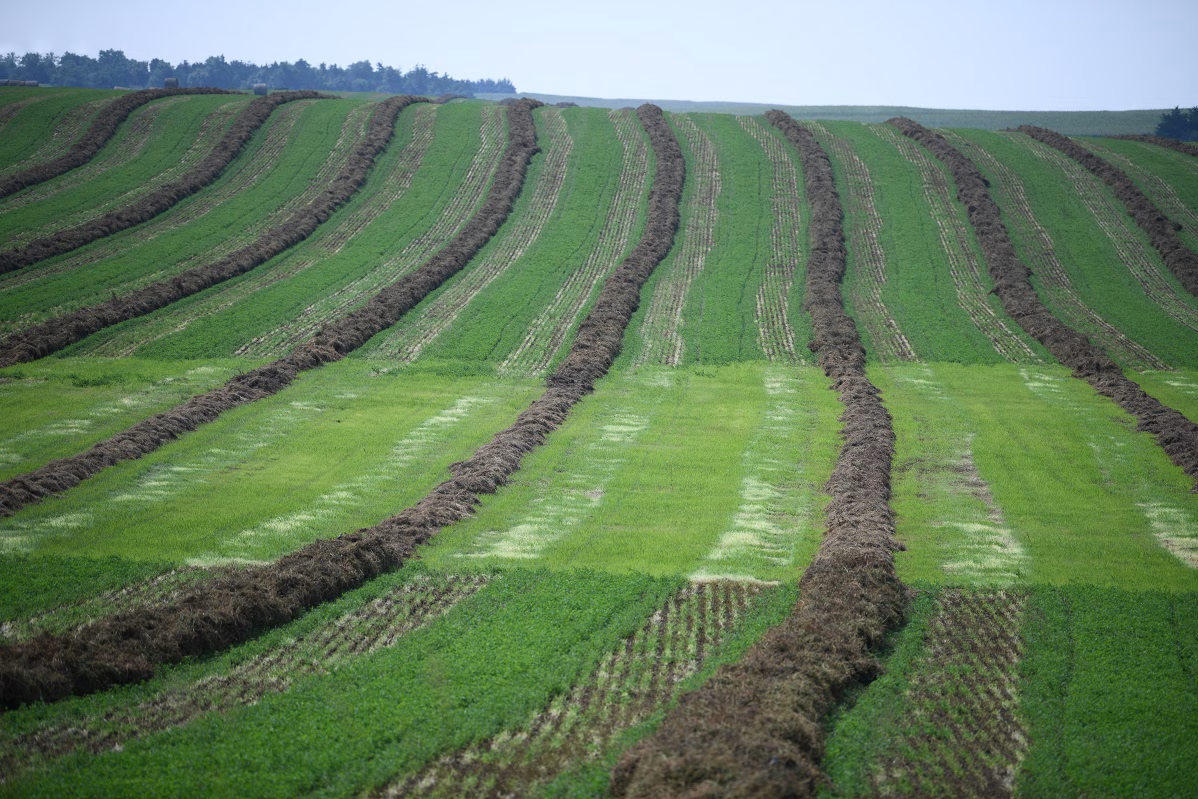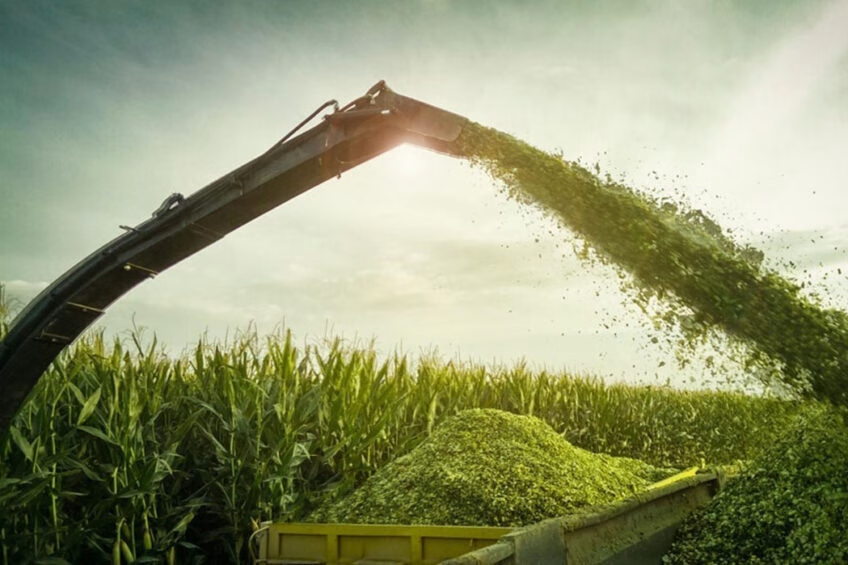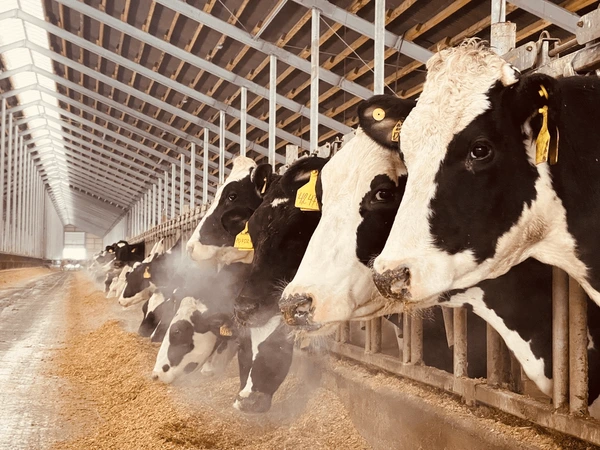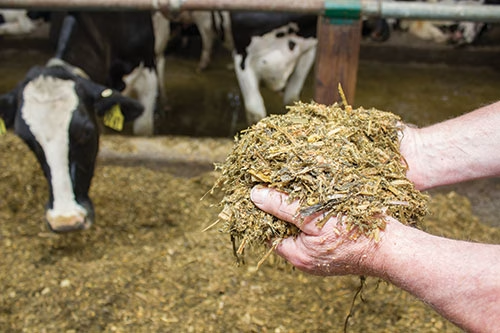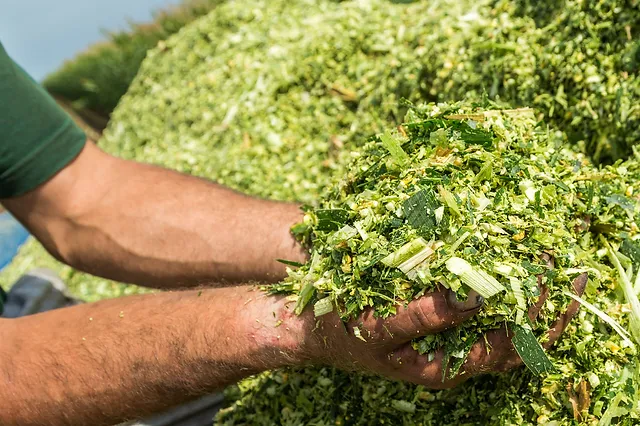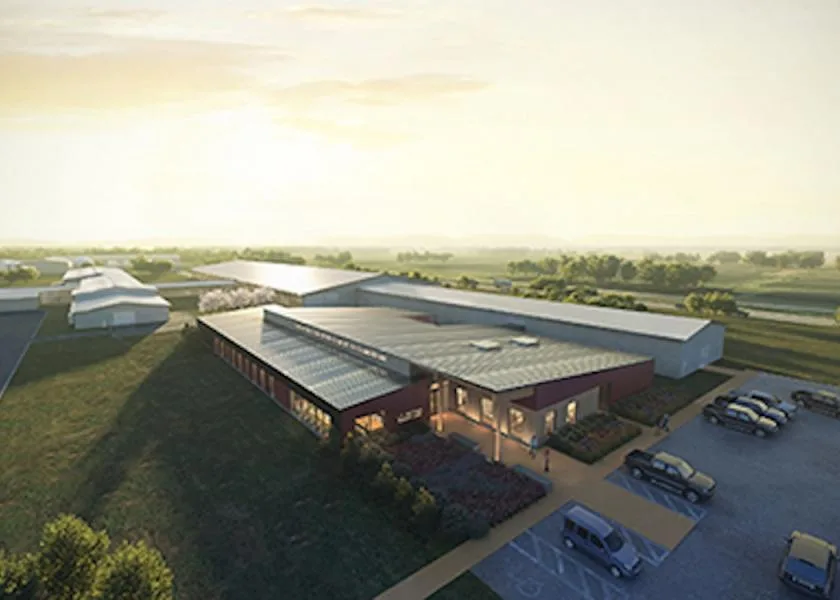Are weeds silently draining your milk profits? Discover the chess-like strategy that top dairy producers use to outmaneuver these costly invaders.

The battle against weeds on your dairy operation isn’t just another chore—it’s a high-stakes chess match where the wrong moves can cost you thousands in lost milk production and forage quality. While many producers continue fighting yesterday’s battles with outdated tactics, the weeds themselves have evolved, developing resistance and adapting to our predictable patterns. It’s time to revolutionize how we think about weed management on dairy farms.
The Hidden Milk Thief: How Weeds Are Stealing Your Profits
Every dairy producer understands that high-quality forage drives milk production, but few fully appreciate just how dramatically weeds undermine this equation. Weeds are silent profit thieves, operating through multiple channels that directly attack your bottom line.
Direct competition with your desirable forages for water, nutrients, light, and physical space leads to significant yield reductions. But the damage goes far beyond simple quantity issues. Weeds typically contain substantially lower levels of crude protein and digestible energy while carrying higher levels of less digestible fiber (higher NDF and ADF values) compared to your carefully selected forage grasses and legumes. This quality dilution translates directly to reduced milk output—every percentage point increase in weed content in your TMR is like pouring milk down the drain.
The economic impact compounds further when considering that certain common weeds pose acute threats to animal health. Species like pigweeds, nightshades, cocklebur, and hoary alyssum can be directly poisonous or accumulate dangerous levels of nitrates under specific conditions. Ingestion can lead to sickness, reduced dry matter intake, or even death in severe cases. Others, including wild celery, Mexican tea, and various mustard species, impart undesirable off-flavors to milk, potentially affecting your milk check through quality deductions.
Let’s be brutally honest here: Are you really calculating the true cost of weeds on your operation? Most producers focus only on the visible costs of control—herbicides, equipment, labor—while completely overlooking the invisible costs of reduced milk production, lower component percentages, and compromised herd health.
Dairy Forage Weed Toxicity Quick Reference
| Weed | Toxicity Risk | Critical Growth Stage | Milk Taint Risk |
| Hoary Alyssum | Lameness in horses | Flowering | Yes |
| Nightshade | Neurological symptoms | Berry formation | Yes |
| Buttercup | Oral irritation, bloat | Early vegetative | No |
| Bracken Fern | Thiamine deficiency (cattle) | Mature fronds | No |
Why Your Weed Control Program Is Probably Failing
If you’re like most dairy producers, your approach to weed management likely falls into one of these problematic categories:
- The Chemical Dependency Trap: Relying almost exclusively on herbicides, often the same products year after year, creating perfect conditions for resistance development—like using the same teat dip on mastitis pathogens for decades
- The Reactive Firefighter: Waiting until weeds are already established and competing with your crops before taking action—similar to treating clinical mastitis instead of preventing it
- The One-Size-Fits-All Applicator: Using the same control methods across all fields regardless of specific weed species, soil conditions, or crop rotations—akin to feeding all your cows the same TMR regardless of production level or stage of lactation
- The Border Ignorer: Focusing exclusively on field interiors while neglecting fence rows, ditches, and field margins that serve as weed reservoirs—like cleaning your parlor but ignoring the holding area
These approaches might have worked decades ago, but today’s weed challenges demand more sophisticated strategies. The evolution of herbicide-resistant weeds, increased regulatory restrictions, consumer demand for reduced chemical inputs, and the need to balance weed control with soil conservation goals have fundamentally changed the game.
Are you still playing checkers while your weeds are playing chess?
Think Like a Weed: Understanding Your Enemy’s Playbook
To defeat your opponent, you must understand how they think. Weeds have evolved remarkable survival strategies that make them formidable adversaries:
The Seed Bank: Your Farm’s Weed “Savings Account”
One of the most useful ways to conceptualize weed persistence is viewing the soil’s reservoir of weed seeds—the seed bank—as a financial account. Weed seed production represents “deposits” into this account, while germination of seeds (followed by death or control of the seedlings) represents “withdrawals.” Your goal should be to maximize withdrawals while minimizing deposits—essentially driving the account toward insolvency.
The scale of this challenge becomes clear when considering the reproductive capacity of common weeds. Dandelion can generate upwards of 15,000 seeds per plant, curly dock can yield over 60,000, and aggressive species like Palmer amaranth may produce over 100,000 seeds from a single female plant. This prolific output is how weeds maintain their stranglehold on your fields.
Research from Nebraska dramatically illustrates what’s possible with consistent management: When weeds were prevented from producing seeds over a five-year period, the seed bank density was reduced to just 5% of its original level. However—and this is crucial—in the sixth year, when weeds were allowed to reproduce, the seed bank density rebounded to 90% of the original level. This demonstrates both the potential for effective seed bank reduction through consistent prevention of seed production and how quickly progress can be reversed if vigilance lapses.
The industry’s dirty little secret? Most weed control programs focus exclusively on visible weeds while completely ignoring the invisible seed bank that ensures future problems.
Environmental Triggers: How Weeds Time Their Attacks
Seeds are fundamentally “beholden to their environment” for germination signals. Each weed species has evolved specific responses to environmental cues:
Temperature represents the most critical factor affecting both seed dormancy and germination. Each weed species has an optimal temperature range for germination and minimum threshold temperatures. For many summer annual weeds like foxtails, significant germination begins as soil temperatures warm to 50–59°F. Some weed seeds require fluctuating daily temperatures rather than constant temperatures to break dormancy—not unlike how temperature fluctuations in your bulk tank can affect milk quality.
Moisture is an absolute requirement for germination to proceed. Importantly, temperature and moisture interact synergistically—optimal temperatures are ineffective without sufficient soil moisture, and vice versa. This is why rainfall events frequently trigger synchronized flushes of weed emergence in the field, much like how a combination of heat stress and high humidity can trigger a mastitis outbreak in your herd.
Light requirements vary significantly among weed species. Some seeds require light exposure for germination, an adaptation often found in small-seeded species that lack the reserves to emerge from deep burial (e.g., Canada thistle, curly dock, Palmer amaranth). For these species, tillage or other soil disturbances that bring seeds to the surface can stimulate germination—similar to how agitating your bulk tank can bring butterfat to the surface.
Understanding these triggers provides opportunities for manipulating weed emergence to favor control. For example, knowing that certain weed species require light for germination suggests that practices that minimize soil disturbance after control efforts might reduce subsequent emergence.
The Multiple Flush Challenge: Why One Control Pass Is Never Enough
One of the most frustrating aspects of weed management is the tendency for multiple “flushes” of seedlings to appear over time, sometimes even following a single significant rainfall event. This phenomenon results from several interacting factors:
Seed depth variation: Weed seeds are distributed at varying depths within the soil profile, creating slightly different microenvironments. Seeds closer to the surface may experience more rapid moisture uptake and temperature fluctuations compared to seeds buried deeper, leading to different timing of germination even after a single precipitation event.
Seed characteristics: The physical characteristics of seeds influence their ability to emerge from different soil depths. Grass seedlings, with their protective coleoptile, may emerge from greater depths compared to broadleaf seedlings, which must push their cotyledons to the surface. Small-seeded species like Palmer amaranth and waterhemp are typically restricted to emerging from the top half-inch of soil—not unlike how Jersey calves typically have less vigor at birth than Holstein calves.
Dormancy variability: Even within a single species or from a single parent plant, seeds can exhibit varying levels of dormancy. This intrinsic variability distributes germination over time, serving as a survival strategy that prevents all seeds from germinating simultaneously in response to a single favorable event—similar to how your heifers don’t all come into heat on the same day despite synchronized protocols.
This complexity explains why single weed control events—whether tillage or herbicide application—rarely provide complete season-long control. Multiple control tactics, often implemented sequentially, are typically necessary to address successive flushes of weed emergence.
The Dairy Farm Difference: How Your Management Practices Shape Weed Populations
Dairy operations create unique weed management challenges and opportunities that crop-only farms don’t face:
Grazing Systems: Double-Edged Sword for Weed Control
The way you manage grazing profoundly affects weed populations. Systems characterized by continuous stocking, long grazing periods, or overgrazing often lead to increased weed pressure. This occurs because livestock selectively graze the most palatable forage species, leaving less desirable or unpalatable weeds to thrive and reproduce with reduced competition. Overgrazing weakens the competitive ability of desirable forages, opening up space for weed establishment—much like how overstocking your freestalls leads to increased lameness and reduced lying time.
Conversely, managed grazing systems, particularly rotational grazing involving high stock densities for short durations, can be employed as an effective weed management tool. By concentrating animals in smaller paddocks, you can force livestock to consume less preferred weed species along with the desirable forage, preventing selective grazing. The timing of rotation is critical; grazing weeds when they are most palatable or at their physiologically weakest stage (e.g., Canada thistle at the bud stage before flowering) maximizes the control effect.
Here’s what the grazing consultants won’t tell you: Research reveals an interesting dynamic: high grazing intensity might be more effective at controlling existing weed biomass through forced consumption, while lower grazing intensity appears superior for preventing new weed establishment and reducing seed bank inputs over the long term, likely by maintaining a more competitive forage canopy that suppresses weed germination and growth.
As New Zealand researchers studying buttercup infestations in dairy pastures have found, “Poor persistence of perennial pastures, particularly perennial ryegrass-based pasture, is a major problem for the dairy industry.” Their studies show that proper grazing management is critical for maintaining competitive pastures that resist weed invasion.
Are you using your cows as weed control agents, or are you letting them become weed promoters through poor grazing management?
Manure Management: Are You Spreading Weeds Across Your Farm?
Dairy manure is a valuable resource, but it simultaneously serves as a significant vehicle for the dispersal of viable weed seeds across your farm. Fresh manure can harbor tens of thousands of weed seeds per ton, originating primarily from seeds present in the consumed feed.
While digestion kills many seeds, a notable fraction, especially hard-coated seeds, survives passage through the ruminant digestive system. Manure from dry cows often contains significantly more viable weed seeds than manure from lactating cows, likely reflecting differences in feed quality provided to these groups—similar to how your high-producing cows get the premium TMR while your dry cows might get lower-quality forages.
The uncomfortable truth about composting: Proper composting, characterized by achieving and maintaining high temperatures (140°F/60°C for at least 3 days) and adequate moisture (minimum 35%), effectively destroys the vast majority of weed seeds. However, achieving these conditions consistently throughout the entire compost pile can be challenging, and survival of some seeds, particularly tough species like velvetleaf or bindweed, is possible.
Simple aging or stockpiling of manure without active management to promote heating is largely ineffective at killing weed seeds. Given the potential for seed survival even after digestion and composting, vigilance through field scouting after manure application remains a necessary component of an integrated management plan.
Is your manure management program solving problems or creating them?
Manure Management: Weed Seed Survival Rates
| Method | Temp/Duration | Velvetleaf Survival | Pigweed Survival | Canada Thistle Survival |
| Passive Stockpiling | Ambient/6 months | 78% | 65% | 92% |
| Basic Composting | 130°F/3 days | 12% | 8% | 34% |
| Hot Composting | 160°F/7 days | 0.5% | 0.1% | 3% |
The Forage Quality Dilemma: Balancing Nutrition and Weed Management
Decisions regarding forage harvest—specifically the timing relative to plant maturity, the frequency of cutting throughout the season, and the height at which the forage is cut—are primarily driven by the need to achieve target nutritional quality for dairy rations. However, these decisions profoundly influence weed dynamics and the long-term persistence of the forage stand.
Harvesting alfalfa and other forages frequently and at immature stages (e.g., pre-bud or early bud) yields the highest nutritional quality, characterized by high protein and digestibility, which is demanded for high-producing dairy cows. However, this intensive cutting regime comes at a cost to the forage plants themselves. Frequent harvesting prevents perennial forages like alfalfa from fully replenishing carbohydrate reserves stored in their roots, leading to reduced plant vigor, slower regrowth, increased susceptibility to stress, shortened stand life, and greater vulnerability to weed invasion.
This dynamic highlights the critical importance of integrating management practices that support stand vigor—such as maintaining optimal soil fertility, controlling insect pests and diseases, and potentially allowing longer regrowth intervals for certain cuttings—alongside direct weed control measures to ensure the long-term productivity and weed resistance of dairy forage stands.
Are you sacrificing long-term stand health and weed resistance for short-term quality gains?
The Tillage Question: Is Strategic Disruption the Answer to Herbicide Resistance?
The widespread adoption of no-till and reduced tillage systems has delivered significant benefits for soil conservation, including reduced erosion, improved soil structure, increased organic matter, enhanced water infiltration, and reduced fuel and labor costs. However, these systems have simultaneously increased reliance on herbicides for weed control, creating intense selection pressure for herbicide resistance.
The no-till dogma has created a crisis that few are willing to acknowledge. In long-term no-till systems, several factors contribute to herbicide resistance development:
- Increased Herbicide Dependence: The absence of mechanical weed control increases reliance on chemical options.
- Surface Seed Accumulation: Weed seeds tend to accumulate near the soil surface in no-till systems, rather than being distributed throughout the soil profile as in tilled systems. This concentration creates a dense population of potentially resistant individuals in the germination zone.
As herbicide-resistant weed populations have increased, interest has grown in employing occasional, strategic tillage within otherwise no-till systems. Strategic tillage is defined as “a one-time tillage operation in an otherwise no-till cropping system to manage challenges of long-term no-till”, such as herbicide-resistant weeds or nutrient stratification issues.
Research from Missouri found that inverting the soil with a moldboard plow reduced pigweed densities five- to eight-fold compared with conventional tillage, minimum tillage, or no tillage. By burying surface-accumulated weed seeds below their emergence depth, a single tillage event can potentially provide several years of relief from severe herbicide-resistant weed pressure.
The type of tillage employed significantly influences its effectiveness for weed control and its impact on soil health. There may be advantages to “inversion tillage” (completely flipping the soil with implements like a moldboard plow) over “mixing tillage” (stirring the soil with implements like a disk or field cultivator) in certain situations.
Inversion tillage more effectively buries surface-accumulated weed seeds below their maximum emergence depth, potentially providing multiple years of reduced emergence. In contrast, mixing tillage redistributes seeds throughout the tilled layer, which may actually stimulate more germination of certain species—much like how stirring up a slurry pit brings solids to the surface.
The soil health purists won’t like this, but it’s time for a reality check: While tillage generally has negative impacts on soil structure and organic matter, studies suggest that these effects may be temporary if the tillage is followed by practices that rebuild soil health. Research in Pennsylvania found that “most of the negative effects of strategic tillage on soil health indicators (soil carbon at 0–5 cm, water stable aggregates and bulk density) were mitigated in no-till annual and perennial cropping systems after 3 years’ growth of annuals and cover crops and 2 years of perennial forages”.
The decision to employ strategic tillage remains a complex calculation of risks and benefits, weighing the severity of the immediate weed problem against potential short-term setbacks in soil health indicators, direct operational costs, and the potential for long-term recovery through complementary soil-building practices.
Is your commitment to no-till creating a herbicide-resistant nightmare? Sometimes you need to take one step back to move two steps forward.
Weed Seed Bank Reset: Tillage vs. No-Till
| Factor | Continuous No-Till | Strategic Tillage (Every 5 Years) | Conventional Tillage |
| Surface Seed Density | High | Moderate | Low |
| Herbicide Dependency | Extreme | Reduced | Moderate |
| Soil Carbon (0-5 cm) | 3.2% | 2.9% (recovers in 3 years) | 2.1% |
| Pigweed Control | 40% Efficacy | 85% Efficacy | 70% Efficacy |
Beyond the Field: Why Your Fence Rows Matter More Than You Think
Effective weed management on your dairy farm cannot be confined solely to pastures and cultivated fields. Non-crop areas, including fence rows, ditches, laneways, field edges, and around buildings, often serve as significant, yet frequently overlooked, reservoirs for weed populations.
These peripheral areas typically receive less management attention than production fields, allowing weeds to establish, thrive, and reproduce with minimal competition or control. They can harbor large populations of annual, biennial, and perennial weeds, including many of the same problematic species found in adjacent fields, as well as woody brush.
These uncontrolled populations produce vast quantities of seeds that readily disperse via wind, water, animals, or machinery into neighboring pastures and crop fields, acting as a constant source of re-infestation. Failure to manage weeds in these non-crop zones significantly undermines the effectiveness and cost-efficiency of in-field control measures. As one expert bluntly put it: “If you want a really clean field it does matter what your neighbor’s doing what’s happening in the ditch what you’re doing to your side roads.”
The industry’s blind spot: A sustainable approach to managing non-crop areas often involves shifting away from strategies that aim for complete bare-ground maintenance, particularly those relying solely on repeated non-selective herbicide applications or soil sterilants. These approaches can be counterproductive in the long run by creating ideal conditions for erosion and the establishment of new, often problematic, weed species.
Instead, a more resilient strategy focuses on establishing and actively managing a competitive stand of desirable perennial vegetation (usually grasses) using a combination of timely mowing and selective herbicide applications as needed. This requires proactive planning and integration into the overall farm weed management program, rather than treating these areas as an afterthought.
As the Northern Ireland Department of Agriculture, Environment and Rural Affairs (DAERA) notes, “The presence of broadleaved weeds in grassland will limit grass yield and quality. Docks and chickweed are nutrient loving weeds, thriving in more intensively managed swards.” They emphasize that controlling weeds in grassland is crucial as “they compete for nutrients and space, reduce quantity and quality of the grass and hinder silage fermentation.”
Are your fence rows and field edges undoing all your in-field weed control efforts?
The Regulatory Minefield: Navigating Herbicide Rules in Dairy Systems
The rules governing pesticide use, particularly herbicides in forage systems accessible to livestock, differ markedly between the United States and Canada, and also vary significantly at the state and provincial level. This regulatory fragmentation adds considerable complexity for dairy producers operating across or near borders, or for advisors providing recommendations.
Key areas of regulatory importance include:
Maximum Residue Limits (MRLs): These define the maximum legally permissible concentration of a pesticide residue in or on food or feed commodities. Canada places particular emphasis on MRLs for feed items, including grazed forage and hay. Herbicides applied to areas where livestock may graze must have established MRLs or an exemption from tolerance under PMRA regulations. Applying a product without the necessary MRLs to grazed land is a violation of the label and can result in the adulteration of animal products (milk, meat), rendering them unsalable.
Grazing and Harvesting Restrictions (PHI): Herbicide labels contain legally binding instructions specifying the minimum time interval required between application and when livestock can graze the treated area or when the forage can be harvested for hay or silage. These Pre-Harvest Intervals (PHIs) or grazing restrictions are crucial for preventing illegal residues and ensuring animal safety. Intervals can range from zero days to several weeks or months, or even restrict grazing until the following season, depending on the herbicide, application rate, forage type, and animal class (lactating dairy animals often face the strictest limitations).
For instance, Canadian regulations may impose a 7-day grazing restriction for lactating dairy animals after 2,4-D application on tolerant crops, but explicitly prohibit feeding forage from stands terminated with 2,4-D. Triclopyr labels in Canada mandate restricting lactating dairy grazing until the next growing season. Glyphosate is often the only registered option for pre-harvest termination if the forage is intended for feed.
Herbicide Grazing Restrictions: US vs Canada
| Herbicide | US Lactating Dairy Grazing Restriction | Canada Lactating Dairy Grazing Restriction | Notes |
| 2,4-D | 7 days | 7 days (forage termination prohibited) | Canada bans feeding terminated stands |
| Triclopyr | 14 days | Next growing season | Quebec requires 30m buffers |
| Glyphosate | 0 days (pre-harvest only) | 0 days (pre-harvest only) | Only option for forage termination in CA |
The regulatory reality that could cost you your milk check: Navigating this intricate web of regulations represents a significant operational challenge for North American dairy farmers. The differences in MRL requirements, grazing/harvesting restrictions, and specific state/provincial mandates mean that herbicide choices and application practices must be carefully vetted for local compliance. Assuming that a product or practice approved in one jurisdiction is acceptable in another can lead to illegal applications, residue violations, and potential economic consequences.
Are you absolutely certain that every herbicide application on your farm is fully compliant with current regulations?
Your 7-Step Integrated Weed Management Blueprint
Achieving resilient and sustainable weed management requires moving beyond reactive, single-tactic approaches. Here’s a comprehensive framework tailored for dairy operations:
1. Prevention: Build Your First Line of Defense
- Use certified weed-free crop and forage seed
- Thoroughly clean tillage, planting, and harvesting equipment, especially when moving between fields with differing weed pressures
- Actively manage weeds in non-crop areas like fence lines and ditches to prevent seed production and spread
- Control weed escapes within fields before they set viable seed
- Implement proper manure composting techniques to reduce weed seed viability
2. Enhance Crop Competitiveness: Let Your Forages Fight For You
- Select well-adapted and disease/pest-resistant forage varieties
- Optimize seeding rates, ensure proper seeding depth for quick emergence, and prepare a firm seedbed
- Utilize narrow row spacing where feasible to hasten canopy closure
- Maintain optimal soil fertility based on soil tests (correcting pH, ensuring adequate P and K)
- Manage irrigation effectively to avoid water stress or waterlogging
- Control other pests (insects, diseases) that can weaken the forage stand
3. Diversify Your Rotation: Break the Weed Cycle
- Include perennial forages like alfalfa, clovers, or grass mixtures in the rotation
- Consider annual forages, such as small grains (oats, triticale) or sorghum-sudangrass, to provide different planting and harvest windows
- Ensure effective termination of perennial forages to prevent them from becoming weeds in subsequent crops
4. Implement Strategic Grazing: Turn Your Cows Into Weed Fighters
- Consider rotational grazing with high stock densities for short durations to force consumption of less palatable weeds
- Time grazing to target weeds at their most vulnerable growth stages
- Maintain appropriate grazing intensity to prevent selective grazing while preserving competitive forage growth
As noted by organic dairy experts, “Proper grazing management, along with optimal soil fertility, is the prevention, and often can be the cure, for weed concerns.” They add that “cows can be trained to eat weeds, which can then decrease the weed’s ability to overtake a pasture. Managing weeds in this manner provides nutritious forages, reduces weed pressure, can avoid the use of costly inputs or chemicals, and can be an economical way of managing weeds in pastures.”
5. Deploy Mechanical Controls Strategically
- Time mowing to prevent seed production in annual and biennial weeds
- Consider strategic tillage for severe herbicide resistance problems, but follow with soil-building practices
- Hand-remove isolated patches of particularly problematic weeds before they spread
6. Use Chemical Controls Judiciously
- Select herbicides based on accurate weed identification, crop safety, and known resistance issues
- Apply at optimal timing—when weeds are small and actively growing
- Use multiple effective modes of action to prevent resistance development
- Strictly adhere to label instructions regarding rates, timing, and grazing/harvesting restrictions
7. Monitor, Adapt, and Refine
- Scout fields regularly to identify emerging problems early
- Keep detailed records of weed populations, control measures, and results
- Adjust strategies based on observed outcomes and changing conditions
Cost-Benefit: Weed Escapes vs. Prevention
| Scenario | 5-Year Cost/Acre | Milk Loss (lbs/year) | Stand Longevity Impact |
| Uncontrolled Pigweed | $1,220 | 1,450 lbs | -3 years |
| Managed Seed Bank | $380 | 0 lbs | +2 years |
| Herbicide Resistance | $2,100 | 2,800 lbs | Total reseed |
The Bottom Line: Weed Management Is a Long-Term Investment
Effective weed control on dairy farms isn’t achieved through a single season’s efforts or by relying on a silver-bullet solution. It requires a strategic, integrated approach that addresses the biological realities of weed persistence while working within the practical constraints of dairy production systems.
By viewing weed management as a long-term investment rather than a yearly expense, you can progressively reduce weed pressure, enhance forage quality, and ultimately improve your bottom line. The most successful dairy producers understand that managing the weed seed bank is like managing a financial portfolio—consistent, diversified investments over time yield the greatest returns.
The challenges are real: herbicide resistance is spreading, regulatory restrictions are increasing, and consumer expectations are evolving. But by adopting an integrated approach based on sound biological principles, you can stay ahead of these challenges and maintain productive, profitable forage systems that support your dairy operation for years to come.
It’s time to take a hard look at your weed management program. Are you still using outdated approaches that are costing you milk production and profits? Are you creating herbicide-resistant superweeds through overreliance on the same chemicals? Are you ignoring the critical role of prevention and seed bank management?
The dairy producers who think several moves ahead will always have the advantage in the chess match against weeds. Just as you wouldn’t make breeding decisions without considering genetic merit, or nutrition decisions without forage testing, weed management requires the same level of strategic thinking and attention to detail. Your milk check depends on it.
Key Takeaways
- Weeds cost dairy farms far more than just control expenses—they reduce milk production by diluting forage quality (higher NDF/ADF, lower protein and energy) and can cause health issues or milk tainting, with uncontrolled pigweed potentially causing 1,450 lbs of milk loss per acre annually.
- The seed bank concept is crucial—viewing weed seeds as “deposits” and germination as “withdrawals” explains why prevention of seed production is vital, as demonstrated by Nebraska research showing 95% reduction in seed bank over five years of consistent management.
- Dairy operations face unique weed challenges through grazing management, manure spreading (which can distribute viable weed seeds), and forage harvest timing decisions that balance immediate nutritional quality against long-term stand health and weed resistance.
- Strategic tillage may be necessary in long-term no-till systems facing herbicide resistance, with research showing 85% pigweed control efficacy from occasional inversion tillage compared to just 40% in continuous no-till systems.
- Effective weed management requires an integrated approach combining prevention, competitive forages, diverse rotations, strategic grazing, mechanical controls, judicious chemical use, and consistent monitoring—potentially reducing 5-year costs from $2,100 to $380 per acre.
Executive Summary
This comprehensive article frames weed management as a strategic chess match that directly impacts dairy farm profitability through reduced forage quality, milk production losses, and increased costs. It challenges conventional approaches by exposing four common management failures while offering a detailed 7-step integrated weed management blueprint tailored specifically for dairy operations. The article emphasizes understanding weed biology—particularly seed bank dynamics and germination triggers—as the foundation for effective control, and presents compelling economic data showing that properly managed weed control can save $840/acre over five years while extending stand longevity by two years. By advocating for a long-term investment mindset rather than reactive tactics, the article provides dairy producers with practical strategies to prevent herbicide resistance, maximize forage quality, and ultimately protect their milk check through strategic weed management.
Learn more:
- Optimizing Dairy Farm Efficiency: The Role of Corn Silage, Cover Crops and Perennial Hay in Sustainable Feed Rotations – Explores how crop rotation and frequent hayfield mowing help manage weeds and pests while improving farm sustainability, directly connecting to the integrated weed management approach.
- Enhancing Forage Quality for Improved Dairy Cow Nutrition – Discusses key factors affecting forage quality including plant species selection, harvest timing, and storage conditions – all critical elements in managing weeds for optimal forage production.
- 7 Steps to Enhancing Performance and Reducing Feed Costs in Dairy Cattle – Provides strategies for monitoring forage quality and implementing effective weed control in pastures to improve animal performance and reduce feed costs.
 Join the Revolution!
Join the Revolution!
Join over 30,000 successful dairy professionals who rely on Bullvine Daily for their competitive edge. Delivered directly to your inbox each week, our exclusive industry insights help you make smarter decisions while saving precious hours every week. Never miss critical updates on milk production trends, breakthrough technologies, and profit-boosting strategies that top producers are already implementing. Subscribe now to transform your dairy operation’s efficiency and profitability—your future success is just one click away.







 Join the Revolution!
Join the Revolution!